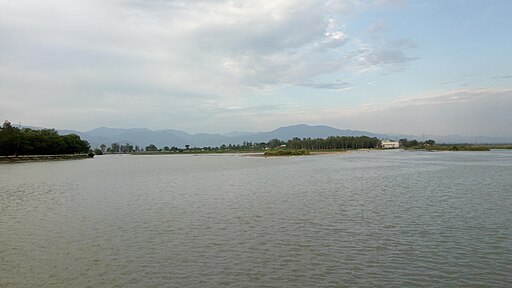Asan Conservation Reserve, alias Asan Barrage, is the first Ramsar site in the Indian state of Uttarakhand. This Ramsar wetland is a 444-hectare stretch of the Asan River, running down to its confluence with the Yamuna River in the Dehradun district. The declaration was made in July 2020. It is also India’s first conservation reserve. It is also listed as an Important Bird Area (IMA) by the Bombay Natural History Society (BNHS), an NGO engaged in conservation and biodiversity research established in 1883, and BirdLife International.
Asan Conservation Reserve
Constructed in 1967, the Asan Barrage is 287.5 meters long. The confluence of the Eastern Yamuna Canal and the Asan River is where this Ramsar wetland is located. Asan Reservoir is part of the Asan Dam and Asan Barrage. This dam is also known as Dhalipur Lake.
In particular, these wetlands are home to around 330 species of birds (including some rare species). Moreover, critically endangered species like a white-rumped vulture (Gyps bengalensis), red-headed vulture (Sarcogyps calvus), and Baer’s pochard (Aythya baeri) are there in these wetlands.
Also, it is a fish spawning ground. Moreover, 49 fish species, including the endangered Putitor mahseer (Tor putitora) are there. It is also home to many water-bird species.
Adventure water sports are available here. You can go for Boating, nature trail, or bird-watching. Bird watchers and nature lovers have separate demarcated routes for walking.
A Short Briefing on Ramsar Sites
Overall, India now has 39 Wetlands of International Importance (as of October 2020). India has the highest number of wetlands in South Asia under the Ramsar Convention treaty. This wetland has a lot of biological diversity.
Strict protection rules apply to wetlands declared as Ramsar sites A few more Indian wetlands recommended for inclusion into the list of Ramsar sites are pending approval.
There are around 170 signatories to the treaty of the Ramsar Convention. As of October 2020, authorities declared more than 2,000 sites as Ramsar sites. Overall, Ramsar sites cover more than 20 crore hectares of wetlands.
Assan Barrage Bird Sanctuary
Assan Barrage Bird Sanctuary was established in 1967 when the Barrage was constructed. It is a manmade wetland where rivers Yamuna and Asan converged.
How do I Go to Asan Conservation Reserve?
This Ramsar site is located on the banks of River Yamuna, near Dehradun, in the Garhwal Himalayas. Dehradun is the capital of Uttarakhand state. It is located around 43 kilometers northwest of Dehradun City. Dakpathar town is around 11 kilometers from these wetlands.
Dehradun Railway Station, with station code DDN, is the closest railway station, where all express trains and superfast trains stop. Dehradun Airport has good connectivity to other major nearby airports.
What is the Ideal Time to Visit the Asan Conservation Reserve?
Throughout the year, you can visit this place. However, winter is the ideal season when large numbers of migratory birds are seen. i.e., the ideal time to visit this Conservation Reserve is between October and December and between the middle of March and the end of April.
Asan Barrage or Conservation Reserve is open from 8 a.m. to 6 p.m. and there are no holidays.

